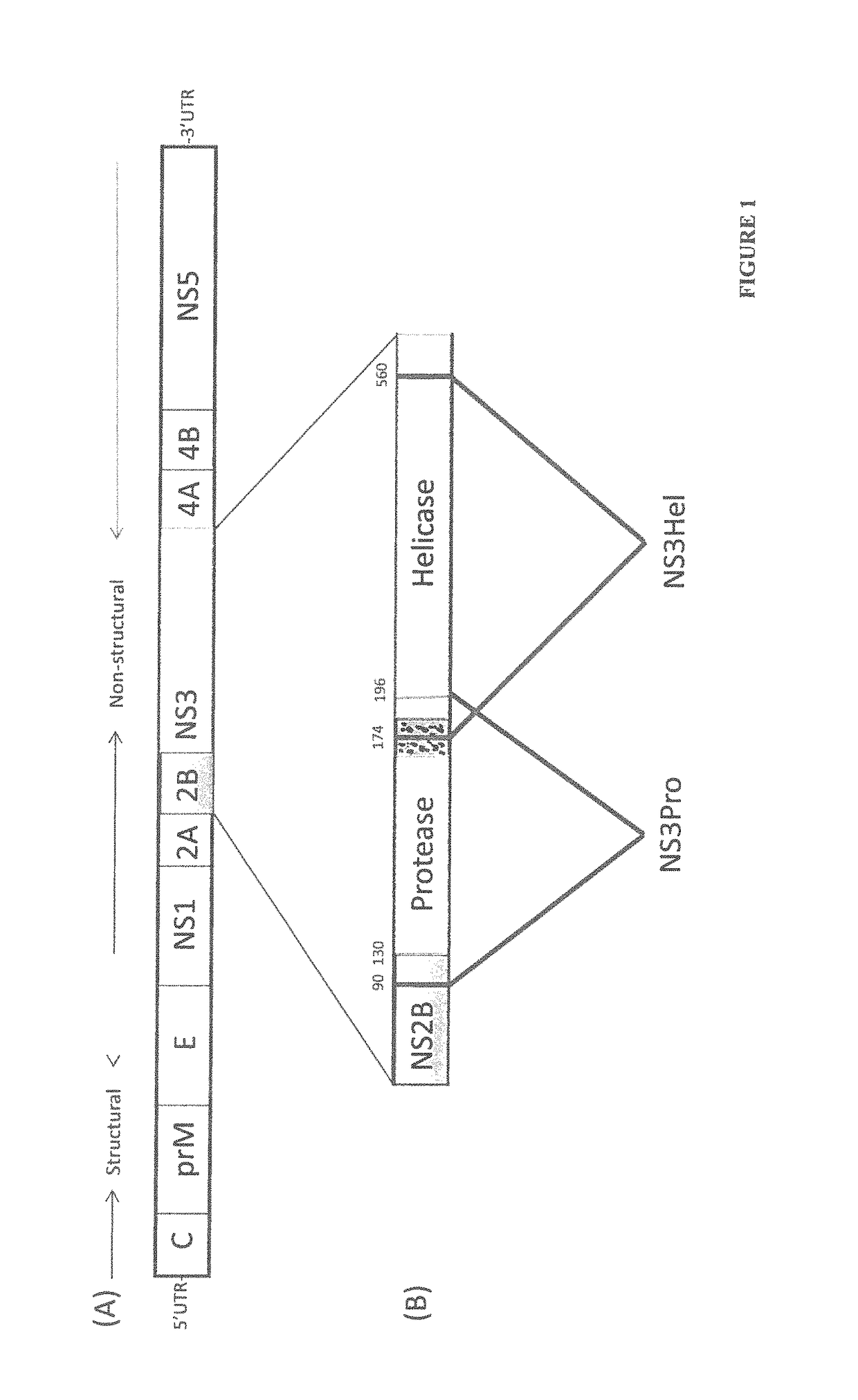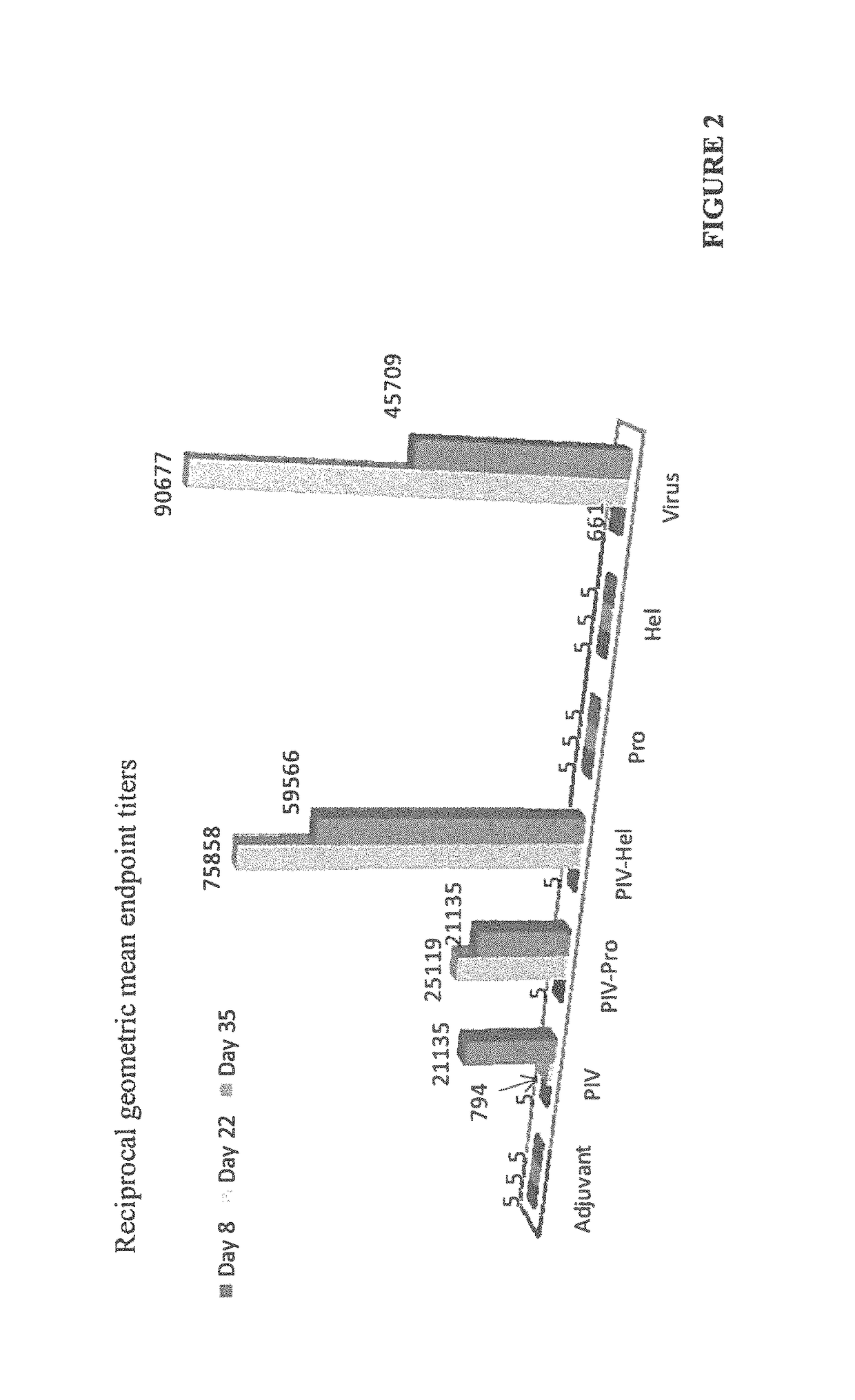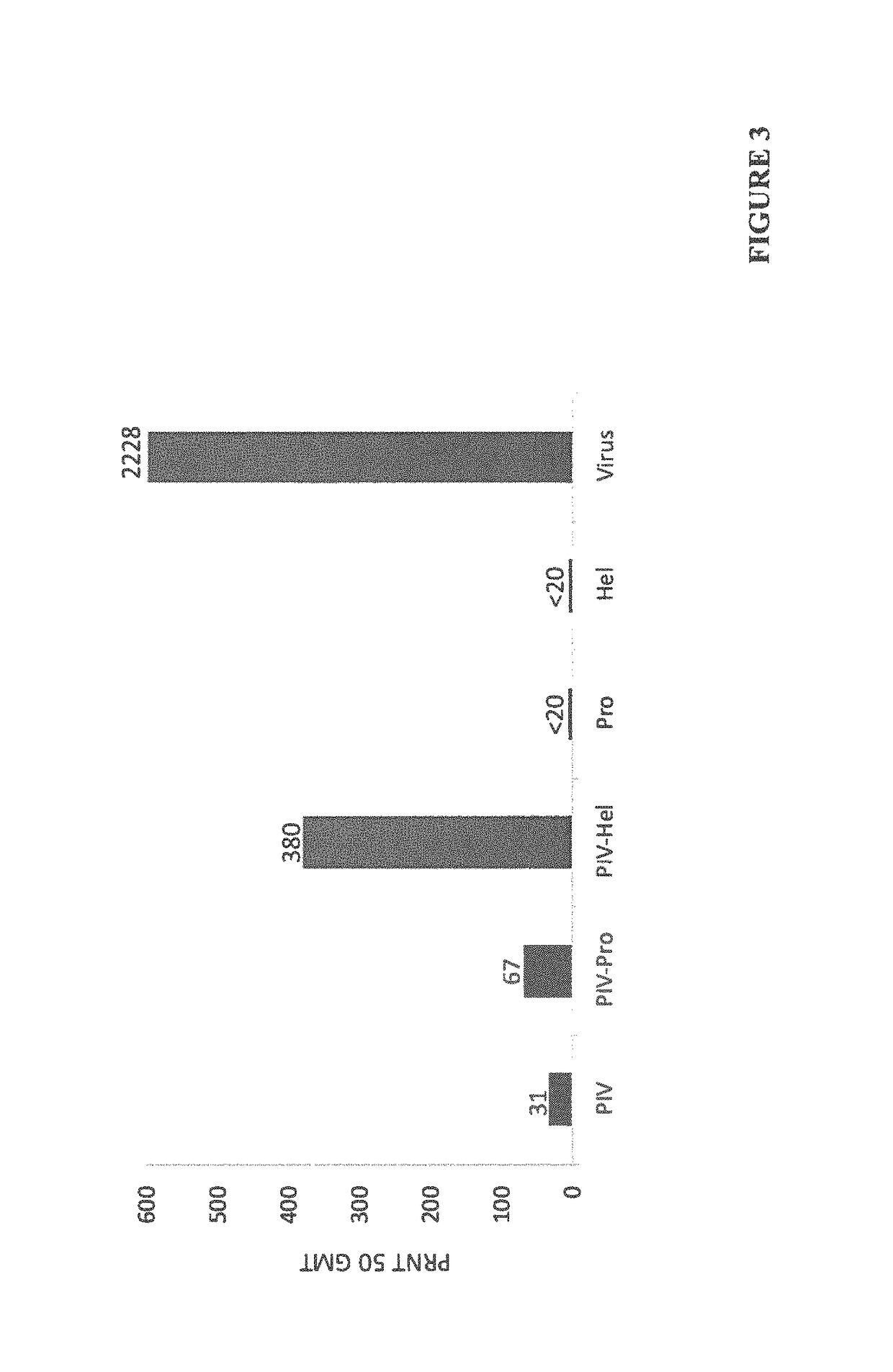Immune enhancing recombinant dengue protein
a technology of recombinant dengue protein and immune enhancing protein, which is applied in the direction of his-tag polypeptides, antibody medical ingredients, peptide sources, etc., can solve the problems of low seroconversion rate, prolonged immunization schedule, and development of live virus vaccines
- Summary
- Abstract
- Description
- Claims
- Application Information
AI Technical Summary
Benefits of technology
Problems solved by technology
Method used
Image
Examples
example 1
Responses in Mice
[0095]To determine the immunological effect of adding recombinant NS3 proteins to the DENV-2 PIV vaccine, mice were immunized on days 0, 14 and 28 with PIV alone, PIV+NS3Pro, PIV+NS3Hel, protease or helicase alone, DENV-2 (positive control) and adjuvant (negative control). Serotype specific IgG antibody titers of sera from immunized mice were measured by ELISA using DENV-2 antigen. FIG. 2 shows detectable antibody on day 8 was seen only in the virus control group with a geometric mean titer of (GMT) 661. By day 22, the highest reciprocal endpoint dilution titer was seen in the virus control group (GMT=90677), followed by the groups that received PIV-Hel (GMT=75858), PIV-Pro (GMT=25119) and PIV only (GMT=794). On day 35, the GMT for the PIV only group rose to 21135, whereas all other groups indicated a slight decline in antibody titer. No antibody to DENV-2 virus was detected in the adjuvant control group, as well as the groups that received protease or helicase alon...
example 2
Provides Enhanced Immunity Against the Dengue Antigen
[0101]In these studies, cell culture supernatant harvested from Vero cells infected with DENV-2 (S16803) was used as virus stock to prepare antigen for the enzyme-linked immunosorbent assay (ELISA) and for the plaque reduction neutralization test (PRNT).
[0102]It was found that NS3 helicase, but not NS3 protease, provides enhanced immunity against antigen, including anti-dengue immunogenic compositions. The enhanced immunity is probably due to T cell-dependent B-cell help. As such, NS3 helicase can be included in immunogenic or vaccine formulations. For example, an immune enhancing composition may comprise the NS3 helicase or fragments of the NS3 helicase such as a helicase polypeptide comprising amino acids 174 to 560 or the T-cell epitope rich region comprising amino acids 200 to 324 of the NS3 helicase region.
example 3
n of IFN-γ Induced by NS3 Helicase
[0103]An IFN-γ ELISPOT was employed in order to investigate the T-cell response induced by the addition of recombinant NS3 proteins to the PIV vaccine (see FIG. 4). The results surprisingly indicate that only the helicase portion of the non-structural protein NS3 provides improved antibody and cell-mediated immune response.
[0104]In these studies, mouse spleen cells were stimulated with overlapping peptides of NS3 and E protein. The highest levels of IFN-γ secreting T cells were detected in the groups that received helicase and the PIV-helicase combination (p=0.002), whereas very few (PIV-Pro) or no spots were seen in mice that received adjuvant, PIV or protease alone. The group that received the virus control showed a low level of IFN-γ secretion when stimulated with the NS3 peptide pool but indicated a strong response with the E and M stimulating peptides. As a positive control to confirm cell viability Con A was used as a stimulating antigen (data...
PUM
| Property | Measurement | Unit |
|---|---|---|
| weight | aaaaa | aaaaa |
| volume | aaaaa | aaaaa |
| volume | aaaaa | aaaaa |
Abstract
Description
Claims
Application Information
 Login to View More
Login to View More - R&D
- Intellectual Property
- Life Sciences
- Materials
- Tech Scout
- Unparalleled Data Quality
- Higher Quality Content
- 60% Fewer Hallucinations
Browse by: Latest US Patents, China's latest patents, Technical Efficacy Thesaurus, Application Domain, Technology Topic, Popular Technical Reports.
© 2025 PatSnap. All rights reserved.Legal|Privacy policy|Modern Slavery Act Transparency Statement|Sitemap|About US| Contact US: help@patsnap.com



